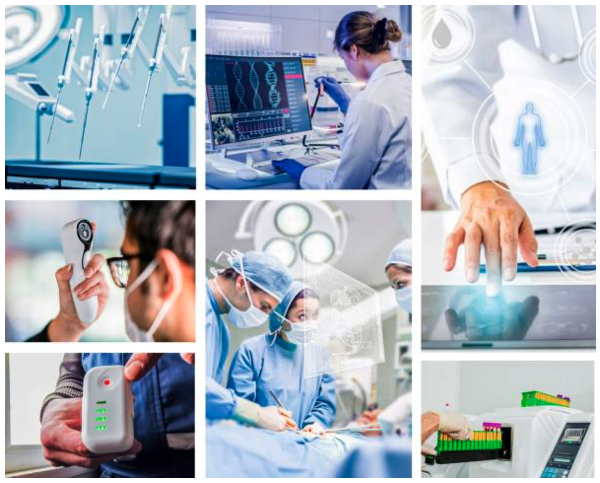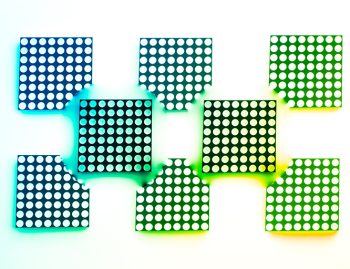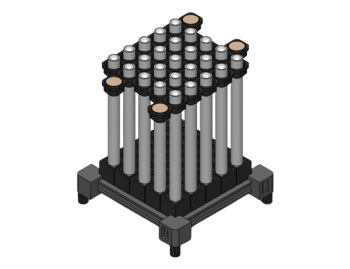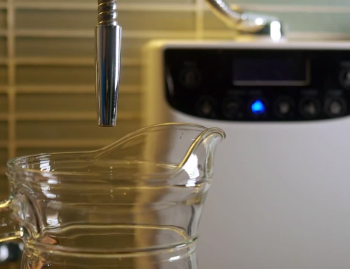
Maintaining good health is a priority for almost everyone, and the industry is responding. Compared to earlier eras, patients and healthcare providers can call on a dizzying variety of medical devices, with new technologies appearing all the time.
But standards are high for designers of medical equipment. From design through to production, medical devices are evaluated by the US Food & Drug Administration (FDA) to determine the level of potential risk to patients. Stringent regulations exist to protect patients and providers from a wide range of hazards. For example, medical equipment must withstand various sterilization processes such as autoclave, sterrad, EtO, gamma and chemical sterilization. A medical system must be sealed against water, dust, and other potential hazards. And, of course, patient and provider must be protected from potentially dangerous voltages.
Since healthcare is a worldwide business, many “famous name” companies can potentially design a product in one region, manufacture it in another, and sell it in a third. A supplier must therefore be ready to coordinate efforts with partners worldwide.
Light pipes in healthcare
Light pipes are found in numerous medical devices. Both rigid and flexible light pipes are used for HMI front panel indicators and flexible light pipes are also used for surgical illumination, especially in extremely small spaces.
Rigid light pipe applications
Rigid light pipes are widely used in HMI indication applications. They must typically withstand medical cleaning and sterilization procedures, so an IP67 rating is required. IP67 provides complete protection against ingress of dust and airborne particles; it also provides protection against water and liquids enough to withstand immersion in up to one meter of water.
Example application: generator of liquid ions for electrolysis
A recent project involved a manufacturer of medical electrolysis test equipment. The operating environment required the entire unit be capable of wash-down and exposure to cleaners. The machine produces liquid that contains ions, so there is always a danger of the electronic enclosure being exposed to liquid. The solution was a PLTR2-250 sealed Rigid Light Pipe. This product has a clear light pipe of 0.25” (6.4mm) and an IP67 rating.
Example application: wearable medical patch
One growing trend in healthcare is the increasing use of wearable devices to monitor patient activity, replacing earlier systems that were restricted to a clinic or hospital setting. Lightweight, unobtrusive wearables can now monitor patients during normal activity, giving regular updates to caregivers via a wireless link.

Figure 2: wearable cardiac monitor (Source: Bivar)
The adhesive patch in figure 2, for example, monitors heart activity for an extended period to help track down the cause of irregular heartbeats. The adhesive patch contains a lithium battery and has several lights to indicate the status. A rigid light pipe transmits LED light to the patch surface, but the patch is only 15mm (0.6”) thick, posing severe restrictions on the light pipe design.
Bivar proposed a VLP vertical-mount light pipe with a length of only 3mm. The customer normally designs their own light pipes for high volume production; in this case, they found that the off-the-shelf solution shortened the design cycle and was cost-competitive with an in-house design.
Example application: endoscope
Bivar recently worked with one of the world’s leading medical device manufacturers to provide a flexible light pipe for an endoscope application. The application required the smallest available LED and imposed stringent requirements for illumination, plus humidity and lifecycle testing. as well as the certifications and material specs necessary to get the product qualified, documented, and approved.
This application also required tighter LED luminosity tolerances than standard specifications, so a more stringent test requirement was developed. A unique rendering and part number was assigned to provide product tracking and visibility across the partner supply chain.
The next step was to facilitate working with the customer’s third-party contract manufacturer in Asia. Bivar’s distributor partner in the region allowed for a seamless collaborate on procurement and delivery.
Conclusion
High performance Bivar LED Indication and Illumination solutions serve a range of medical technology applications. Call our experts for help with your next healthcare HMI or illumination project.
FAQ
We offer light pipes that have either an IP55 or IP67 rating. Our rigid light pipes are constructed of a PC (Polycarbonate), which is chemically resistant to many acids, oxidizing / reducing agents, neutral and acid salt solutions, greases, oils, detergents, saturated, aliphatic and cyclo aliphatic hydrocarbons and alcohols. PC is also autoclavable.
Contact us by submitting a form with your information and details about your project and we can work with your specific project.
Fitment (length and path between the LED on the PCB and the exit face for the output end), and attachment methods for both ends are some of the key design considerations for integrating Bivar light pipes into an existing design.
Our rigid light pipes transmit 88% of the light entering the light pipe. The light pipe captures and redirects light with Total Internal Reflection. They use no power. Assuring the light pipe has the proper numerical aperture to capture as much of the LED light as possible is the best way to increase the efficiency of the light pipe.
Leave a Reply Cancel reply
You must be logged in to post a comment.









